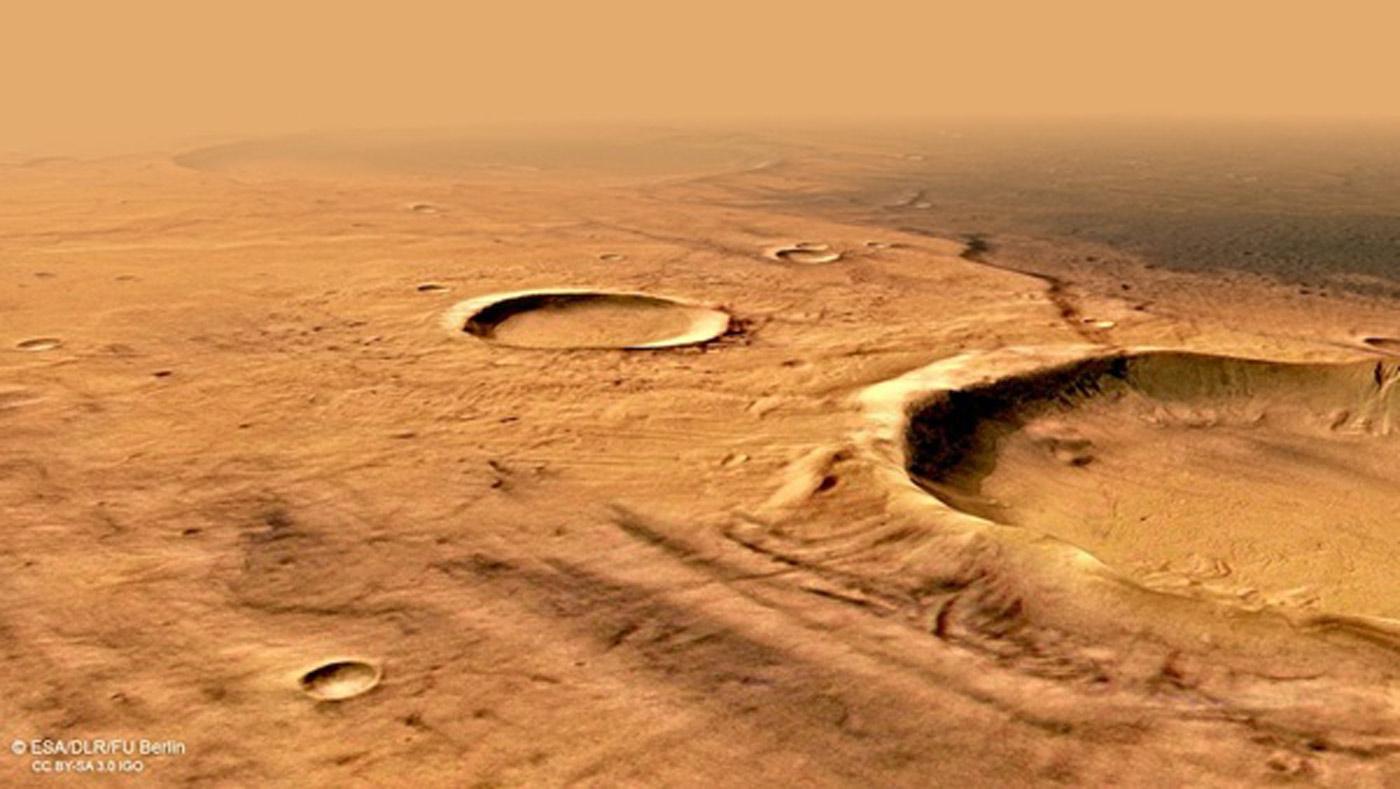
Signs of wind activity are evident within Terra Cimmeria, from Lori Fenton's interview on astronomy.com. http://www.astronomy.com/news/2019/08/snapshot-the-windswept-craters-of…
Download/View our full PDF report here.
More than 100 SETI Institute scientists are working every day, across nearly every scientific discipline, to advance our mission: to explore, understand and explain the origin and nature of life in the universe and the evolution of intelligence. In addition to conducting breakthrough scientific research, they are committed to sharing their discoveries not only with their peers, in scientific journals and conferences, but with all people. SETI Institute scientists offer public lectures, do interviews with popular media outlets, write, engage with social media and teach.
Here are some recent highlights:
- 80 peer-reviewed publications including:
- Landslides on Charon (Chloe Beddingfield and Ross Beyer, Icarus)
- The Discovery of Tatooine: Kepler-16b (Laurance Doyle, New Astronomy Reviews)
- The Mars Global Digital Dune Database (MGD3) : Global patterns of mineral composition and bedform stability (Lori Fenton, Icarus)
- Tunguska eyewitness accounts, injuries, and casualties (Peter Jenniskens, Icarus)
- Polycyclic Aromatic Hydrocarbons with Armchair Edges: Potential Emitters in Class B Sources (Alessandra Ricca and Joseph Roser, The Astrophysical Journal)
- 127 conference abstracts and proceedings including:
- Rotation States of Pluto’s Small Moons and the Search for Spin-Orbit Resonances (Mark Showalter, Pluto System After New Horizons, July 2019)
- In-Situ MicroCT Instrument for Planetary Exploration (Phlippe Sarrazin and Rachel Obbard (Congress on X-ray Optics and Microanalysis, August 2019)
- The Far-IR Emissivity of Saturn’s Rings Observed with Cassini CIRS (Stuart Pilorz and Mark Showalter, EPSC-DPS Joint Meeting, September 2019)
- The L98-59 System: Three Transiting, Terrestrial-size Planets Orbiting a Nearby M Dwarf (Veselin Kostov, Extreme Solar System IV Conference, August 2019)
- Gully Formation on the Central Peak of Lyot Crater: Implications for A Late Paleo Microclimate (Virginia Gulick and Natalie Glines, Ninth International Conference on Mars, July 2019)
- Media stories including:
- Girl Scouts, Now You Can Earn a Badge in Space Science (Pamela Harman, Air & Space Magazine)
- We keep looking for space aliens. Are they looking for us? (Seth Shostak, NBC News)
- Science and Sustainability May Clash on the Moon (John Rummel, Scientific American)
- Astronomer Jill Tarter Answers Alien Questions from Twitter (Jill Tarter, Wired)
- Lava Tubes and the Lunar Underground (Pascal Lee, Space.com)
- Professional and public talks including:
- Characterizing the surface of Mars through remote spectral identification of minerals (Janice Bishop, Keynote speaker at 9th European Conference on Minerology and Spectroscopy, Prague, Czech Republic)
- Science expeditions to planetary analogs (Rosalba Bonaccorsi, Benjamin Dean Astronomy Lecture, California Academy of Sciences, San Francisco, CA)
- Near Earth Asteroids, Space Missions and the Impact Hazard (Michael Busch, Benjamin Dean Astronomy Lecture, California Academy of Sciences, San Francisco, CA)
- Born with the Dinosaurs? The Origin, Age and Remaining Lifetime of Saturn’s Rings (Paul Estrada, Astronomy on Tap, San Jose, CA)
- Exploring the Solar System (Franck Marchis, California College of Arts, San Francisco, CA)
- Contributions to planned missions including:
- Mars Reconnaissance Rover (MRO): Janice Bishop, Virginia Gulick, Ross Beyer, Livio Tornabene
- OSIRIS-Rex: John Marshall, Chloe Beddingfield
- Mars 2020: Pablo Sobron
- Atacama Rover Astrobiology Drilling Studies (ARADS): Rosalba Bonaccorsi
- New Horizons: Mark Showalter, Ross Beyer, Cristina Dalle Ore, Oliver White, Orkan Umurhan, Chloe Beddingfield
Learn more by downloading the full report here:





